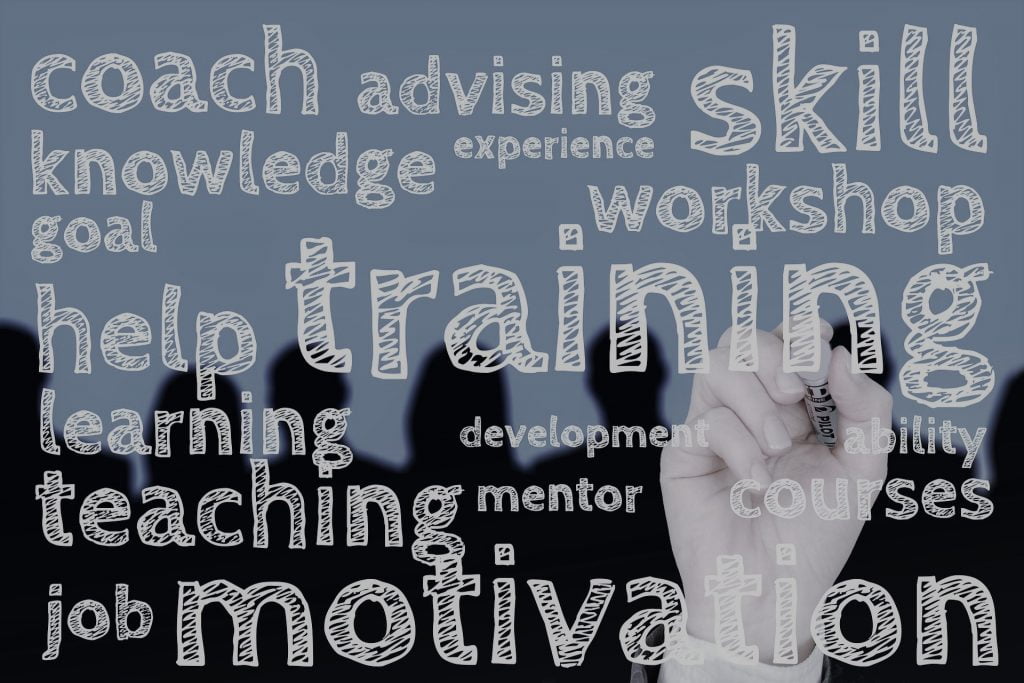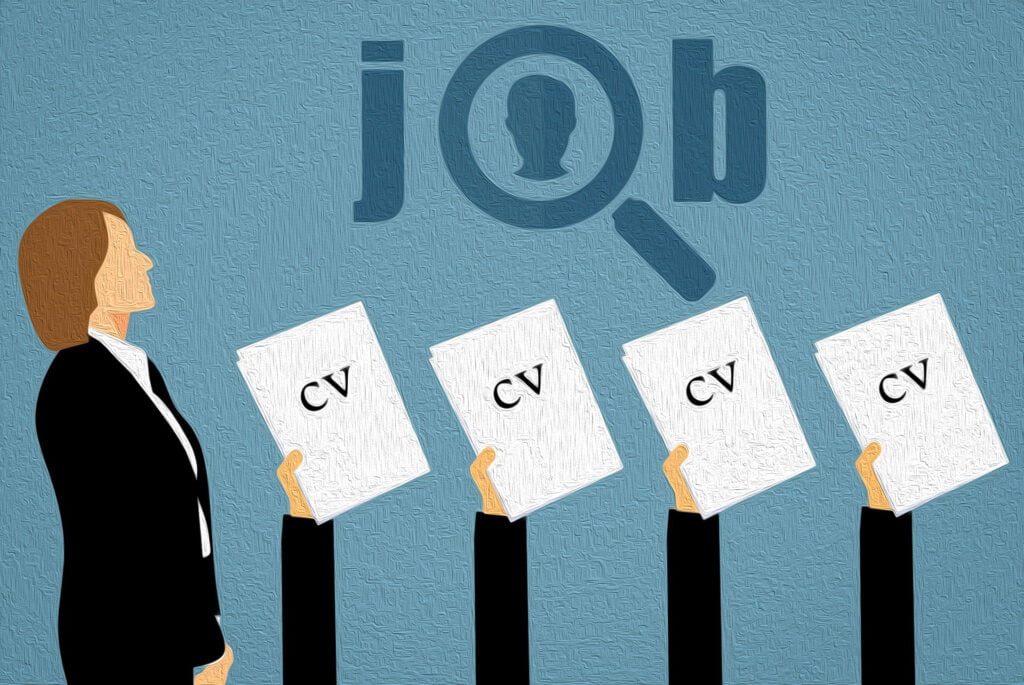Training and development is one of the most vital functions in human resource management. Human resources are such a valuable resource in every organization; therefore, increasing human resources’ effectiveness is so beneficial. The training and development function’s role is to enhance employee’s skills, knowledge, and behavior to accomplish organizational goals and objectives. This chapter briefly discusses the following areas, which are related to training and development.
Learning objectives
- Understand the meaning of training and development
- Understand the importance of T & D
- Know the importance of training & development
- Identify the difference between training and development
- Understand the advantages and disadvantages of training and development
What is training and development?
Training and management is a critical function in human resource management. It can be referred to as a structured process with various organizations’ methods to improve employee’s knowledge and skills.
Training & development is an educational tool, and it uses information, methods, and instructions to improve employees’ existing skills and employee performance.
Enhancing employee’s knowledge, skills and behavior is a necessity due to the changing environment. Therefore T & D plays a vital role as a continuous task in organizations. Effective employees with improved skills and knowledge will help the organization to achieve future goals.
When considering this HRM function, training and development are two different terms, and each has different procedures. Moreover, each has different characteristics and different purposes.
Training
The meaning of training is a well-structured effort by an organization to provide employees learning of job-related capabilities. The capabilities include knowledge, skills, and behavior. Furthermore, they are so essential for job performance. Usually, this training is for non-management employees in the organization, and it is a short-term job-oriented process.
The primary purpose of training is for employees to master the capabilities and apply them to their regular activities.
In addition to that, the training can be identified as a way to create intellectual capital. Intellectual capital includes understanding the manufacturing system, understanding customers, basic skills, advanced skills, and inspired creativity.
Development
When it comes to development, the development is basically for the management and, executives or managers get skills and other capabilities for future tasks. Therefore, development is a career-oriented long-term process, and it enhances the managers’ overall personality and helps them improve their performance.
Development involves problem-solving, technical skills, and decision-making skills. This is also known as executive development or management development.
Role of HR in Training and Development
- Identifying Skill Gaps
HR kicks things off by figuring out what’s missing. They analyze employee performance, gather feedback, and spot areas where people need support or upskilling—like communication, tech tools, or leadership. - Designing Custom Training Programs
Once they know what’s needed, HR gets creative. They design training sessions tailored to the company’s needs—whether it’s a workshop, e-learning module, or hands-on mentoring. - Organizing and Coordinating Everything
From selecting the best trainers to scheduling sessions and sending out invites, HR handles all the behind-the-scenes work. They make sure everything runs smoothly and every participant feels prepared. - Creating a Positive Learning Environment
HR ensures that training doesn’t feel like a dull, forced task. They make it interactive, engaging, and practical so employees actually enjoy learning and apply it in real life. - Monitoring and Evaluating Effectiveness
After the training, HR checks in. They assess if employees are performing better, track improvements, and gather feedback to measure success—and yes, they tweak what doesn’t work. - Providing Continuous Development Opportunities
HR knows learning shouldn’t be a one-time thing. They organize follow-ups, refresher sessions, and growth paths so employees continue evolving in their roles. - Building a Culture of Learning
Through encouragement and support, HR promotes a mindset where people are always hungry to learn, grow, and step up.
Importance of training and development
- The training and development function is so essential for an organization in many ways such as,
- It helps to inspire employees and increase their productivity.
- The job satisfaction of employees increases
- The organization will able to utilize its human resources effectively and efficiently.
- T & D is a good reason for improving leadership and team management.
- T & D is vital to increase the profitability of the company.
- The organizational culture will improve due to training and development procedures.
- It develops the corporate image of the company.
- It develops the relationship between employer and employee.
Objectives of training and development
The main objective of training and development is to ensure skilled and inspired employees to an organization. The other objectives can be mainly categorized into four objectives: individual objectives, organizational objectives, functional objectives, and social objectives.
Individual objectives
T & D allows employees to achieve their personal goals. Moreover, it drives the individual contribution to organizational success. For instance, individual objectives may personal growth, gain knowledge about the industry, salary improvements, or get a promotion.
Organizational objectives
The organization will able to achieve its objectives by improving individual effectiveness. It means the T & D can indirectly influence organizational success by improving employees’ skills, knowledge, and behavior. Some examples for organizational objectives are increased profitability, motivated workforce, reduced cost, reduced wastages, and effective management.
Functional objectives
Production, marketing, finance, HRM, and R & D are the organization’s primary functions. Because of the training and development, the organization can maintain the departmental contribution to achieve objectives. Some functional objectives may be to increase the market share, increase productivity, reduce waste, and improve the products’ quality.
Societal objectives
This means an organization makes sure that they are ethically and socially responding to the needs and challenges of society. For example, providing qualitative service, generating employment, employee welfare, developing industrial relations, and solving social problems are some societal objectives of an organization.
The 5 Stages of Training & Development
Want to know how training is crafted? It’s not just random lectures and handouts. It’s a journey. Let’s break it down:
1. Assessment of Training Needs
It all starts here. HR figures out what skills are missing or what new knowledge is needed. Maybe customer complaints are up? Or a new system’s being launched? Time to learn.
2. Designing the Training Program
HR plans how the training will look—what content to include, how long it’ll be, and who’s going to teach.
3. Implementation
Training happens. This could be hands-on, online, in a classroom—or even role-playing exercises. Anything that fits.
4. Evaluation
Did it work? HR measures how well employees understood and applied what they learned. If it didn’t stick, something’s got to change.
5. Follow-up
The journey doesn’t end after one session. HR checks in later, offers refresher courses, and keeps the learning alive.
Methods of Training & Development
- On-the-Job Training (OJT)
This is learning by doing—right at the workplace. Employees pick up skills while performing their daily tasks, often under the guidance of a senior. It’s hands-on, practical, and perfect for real-time learning. Think of it like learning to ride a bike by actually pedaling, not just reading a manual.Read More… - Classroom Training / Workshops
Traditional, but still effective. This involves structured sessions led by trainers or experts. It’s great for teaching theories, soft skills, or when a group needs to learn the same thing at once. Workshops are usually interactive, with activities, discussions, and role-playing exercises to keep things lively. - E-Learning & Online Courses
With technology taking over, online learning has become a go-to option. Employees can log in anytime, anywhere, and learn at their own pace. It’s budget-friendly, flexible, and ideal for remote teams or busy schedules. From short videos to full certifications—everything’s just a click away. - Coaching & Mentoring
Personalized and powerful. In coaching, an expert helps an employee sharpen specific skills. Mentoring, on the other hand, is more long-term, where a senior guides a junior, offering wisdom, advice, and encouragement. It’s like having your own workplace guardian angel. - Simulation & Role-Playing
Perfect for jobs that involve real-time decision-making. Employees are put in mock situations (like handling a tough customer or managing a crisis) so they can practice before facing the real deal. It’s safe, fun, and super effective. - Job Rotation & Cross-Training
Here, employees switch roles or try out new responsibilities for a while. It boosts understanding of different departments and prepares them for promotions or emergency backups. Plus, it keeps work from feeling stale. - Conferences & Seminars
These are great for networking and getting fresh industry insights. Employees attend events, hear from experts, and return with new ideas, inspiration, and sometimes even new connections.
Each method serves a different purpose, and often, the best results come from mixing and matching them. After all, everyone learns differently—some by doing, others by observing, and many by a little bit of both.
Difference between training and development in HRM
- The training focuses on a particular job role, whereas development focuses on the person.
- Usually, training is a short-term process. However, development is a long-term process.
- Training increases the employee’s skills, knowledge, and behavior to do a specific job, whereas development enhances the overall personality.
- Organizations use training for their operative employees, whereas development uses for executives or managers in the organization.
- Training is a job-oriented process. Nevertheless, development is a career-oriented process.
- Training focuses on short-term achievements, while development is focusing on long-term achievements.
Advantages and disadvantages of training and development
Advantages
- It enhances individual performance, team performance, and organizational performance.
- Update employee’s job knowledge, job skills, and attitudes.
- It helps to reduce mistakes
- Reduces labor turnover
- No need for all time supervision
- Job satisfaction increases.
- Motivated employees in the organization
- Reduces costs and waste.
- Create new job positions
Disadvantages
- The organization needs to hire trainers, spend money on programs.
- The organization needs to pay wages for employees as well as the trainers.
- Employee stress may increase due to T & D programs
- Too many theoretical lecturers
- Employees may be bored with some training sessions
- Some employees think that they do not need any training programs.
Training & Development in HRM: Real-Life Examples
Sometimes, stories explain things best. Let’s peek into a few examples:
1: Retail Store
A fashion store trains its sales reps on soft skills like greeting customers, understanding body language, and upselling. Result? More happy customers and booming sales.
2: Tech Startup
A software startup runs weekly coding bootcamps to keep developers up-to-date on new programming languages. Keeps them sharp and ahead of competitors.
3: Hotel Chain
A hotel invests in cultural sensitivity training for front desk staff. Now, tourists from around the world feel more welcomed than ever before.
Challenges in Training & Development
- Limited Budgets
Let’s be real—training costs money. From hiring expert trainers to paying for learning platforms and materials, it can quickly add up. Smaller businesses often struggle to fund consistent, high-quality programs, making it tough to compete with larger companies that have deeper pockets.
- Lack of Time
In the hustle and bustle of daily operations, finding the right time for training can feel like trying to squeeze water from a rock. Managers worry that pulling staff away from their tasks might affect productivity, while employees feel overwhelmed juggling learning and work.
- Resistance to Change
Not everyone welcomes change with open arms. Some employees see training as unnecessary, boring, or even threatening—especially if it pushes them out of their comfort zones. This mindset can block progress before it even begins.
- Measuring Effectiveness
So, the training’s over… but did it actually work? That’s the million-dollar question. It’s often hard to track how much employees have really learned or how it translates to better performance on the job. Without clear data, evaluating ROI becomes a guessing game.
- One-Size-Fits-All Approach
Everyone learns differently. What works for one employee might completely miss the mark for another. Using generic training without personalizing it often leads to disengagement and poor results.
- Keeping Up with Rapid Change
In today’s fast-moving world, skills become outdated quickly. HR teams often find themselves in a race to keep training content current and relevant, especially in industries like tech and finance.
Future Trends in HR Training & Development
- Personalized Learning Paths
Gone are the days of “one-size-fits-all” training. The future is all about customization. Using data and AI, companies can now tailor learning experiences to fit each employee’s role, skill level, and career goals—like having your own personal coach who knows exactly what you need and when.
- Microlearning & Bite-Sized Content
Attention spans are shorter, and time is tighter. Enter microlearning—short, focused learning modules that can be completed in just a few minutes. Think quick videos, quizzes, or tips that fit easily into a lunch break or coffee run. It’s learning that feels more like scrolling through your favorite app than sitting in a lecture.
- Virtual Reality (VR) & Augmented Reality (AR)
Sounds futuristic? It’s already here! Companies are using VR/AR to simulate real-life work situations—like handling customer complaints or operating machinery—without the risks. It’s immersive, memorable, and fun… who wouldn’t want to learn that way?
- AI-Powered Learning Platforms
Artificial intelligence isn’t just for techies. It’s changing how we learn. Smart systems can now recommend courses, monitor progress, and even adjust difficulty levels based on your performance. It’s like Netflix—but for professional development.
- Lifelong Learning Culture
Learning isn’t a one-time event anymore. The future workplace values continuous growth—encouraging employees to keep learning, experimenting, and evolving throughout their entire careers. It’s about building curious minds, not just compliant workers.
- Focus on Soft Skills & Emotional Intelligence (EQ)
In a world full of automation, what makes us human really matters. That’s why companies are shifting focus toward training in leadership, empathy, adaptability, and emotional intelligence—skills that machines can’t replicate.
- Mobile Learning
With smartphones in every pocket, training has officially gone mobile. Employees can now learn anytime, anywhere—on the bus, in bed, or even while waiting in line at the coffee shop. Convenience is king.
The future of HR training isn’t just about teaching—it’s about transforming. With technology as the sidekick and personalization as the strategy, the next era of employee development looks brighter than ever.
Conclusion
- Training and management is a structured process with various methods used by organizations to improve employee’s knowledge and skills.
- It is an educational tool, and it uses information, methods, and instructions to improve employees’ existing skills and employee performance.
- Training is a job-oriented process that organizations use to develop employee’s job skills, knowledge, and attitudes. It helps non-managerial employees to improve their job performance.
- Development is a career-oriented process that organizations use to enhance managerial employee’s overall personality.
- The main objective of T & D is to ensure the availability of skilled and inspired employees to an organization.





